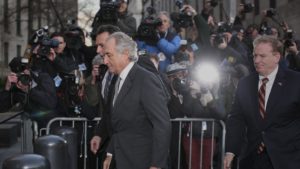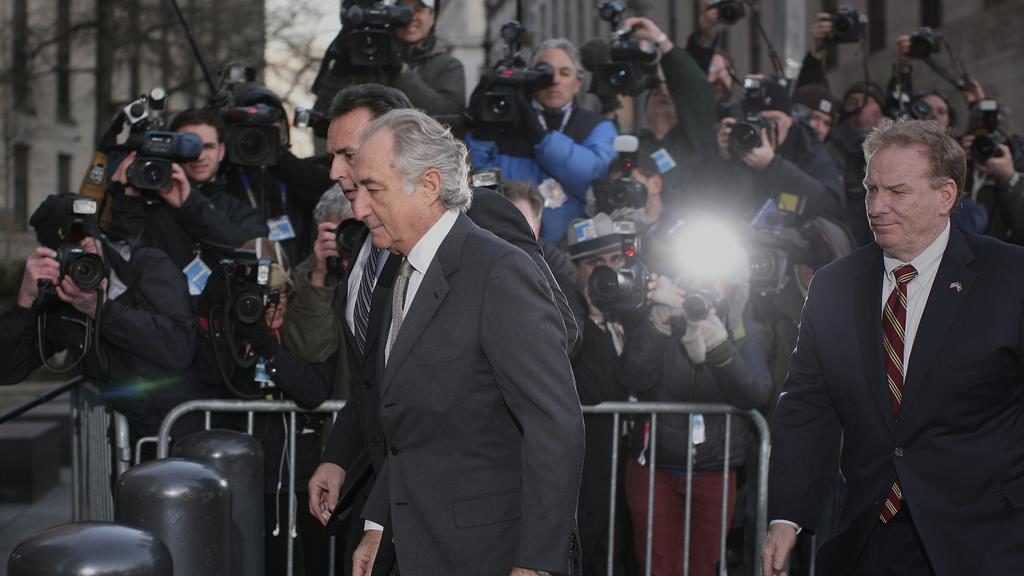Article originally published in the Philadelphia Business Journal on April 26, 2021.
Bernard “Bernie” Madoff engineered history’s largest Ponzi scheme, which he operated for more than 15 years. He died on April 14 at the age of 82 while serving a 150-year prison sentence. He defrauded thousands of investors out of $64.8 billion in assets before his Ponzi scheme collapsed in 2008.
To say Madoff lacked a moral compass is an understatement. He was an affable individual devoid of ethics who had ice water running through his veins. Madoff destroyed the financial security of many individual investors. He also significantly damaged many religious and non-religious charitable organizations.
Madoff was chairman of Bernard L. Madoff Investment Securities, a firm he founded in 1960 as a penny stock brokerage. The firm’s trading division, run by Madoff’s sons, executed legitimate trades. The fraud took place within the investment advisory division. It operated in secrecy on a separate office floor protected by keycard access to a limited number of individuals.
Madoff was a respected and well-established member of the Wall Street community and traveled within a rarified demographic of celebrities and high net worth individuals. As a former non-executive chairman of the NASDAQ stock exchange, how could he not be trusted?
New investors were attracted through word-of-mouth referrals by current investors, including those who invested in feeder funds which in turn invested in Madoff’s hedge fund. The aura of exclusivity created by Madoff made investing with him even more desirable.
Madoff’s hedge fund existed only on paper. No transactions ever took place. Monthly reports sent to investors were fabricated, showing that their investments were earning consistent above average returns even in down markets. Investors who wanted to exit the fund were paid with funds from new investors. During the financial crisis of 2008, the stock market was in near freefall. There wasn’t a new inflow of funds to pay Madoff’s investors who wanted to exit, causing the Ponzi scheme to crash.
On Dec. 9, 2008, Madoff told his wife Ruth and his sons, Mark and Andrew, of the Ponzi scheme. The next day his sons turned him in to federal authorities. Later that month, Madoff and his wife attempted suicide. Due to the pressure of public scrutiny and lawsuits, Mark later committed suicide. Andrew died of cancer. Madoff not only destroyed the lives of many, but also destroyed his family.
So, what are the lessons learned from the Madoff Ponzi fraud?

Federal authorities must not fail in their oversight responsibility
There were numerous opportunities for regulators to uncover the Ponzi scheme. In 1999, Harry Markopolos, a fraud investigator, became suspicious of the returns Madoff was claiming and attempted to model his strategy. When Markopolos found the only way Madoff’s returns and low volatility could be achieved was through fraud, he reported his findings on five occasions to the Securities and Exchange Commission, who ignored him. As a result of their Madoff failures, the SEC made significant investigative changes to uncover fraud.
Feeder funds, pensions and charitable organizations need to perform sufficient due diligence
The feeder funds that invested their clients’ assets with Madoff had a fiduciary obligation to perform sufficient due diligence to ensure those investments were safe. The pension funds and charitable organizations that invested with Madoff had the same fiduciary obligation. They failed to perform sufficient due diligence. Most likely this was due to Madoff’s reputation within the financial industry or the personal relationship some had with him.
No one questioned the size and capability of the small audit firm that Madoff was using – Friehling & Horowitz. In March 2009, the SEC charged the firm with “committing securities fraud by representing that they had conducted legitimate audits, when in fact they had not.”
Diversify your investment assets among a number of asset managers
Some individuals had invested most of their retirement assets with Madoff, and their standard of living plunged precipitously when the Ponzi scheme collapsed. The lesson: Diversify not only your portfolio, but also the firms that manage those assets. By investing with different asset managers, you also have access to different views on the direction of the market and the economy. Diversifying should also be a key practice for feeder funds. Many had too high an exposure to Madoff, but the reported returns were too good not to overweight his hedge fund in their portfolios.
Remember the adage, “If it’s too good to be true, it probably is.”
Stan Silverman is founder and CEO of Silverman Leadership and author of “Be Different! The Key to Business and Career Success.” He is also a speaker, advisor and widely read nationally syndicated columnist on leadership, entrepreneurship and corporate governance. He can be reached at Stan@SilvermanLeadership.com.

